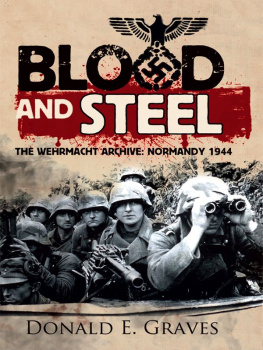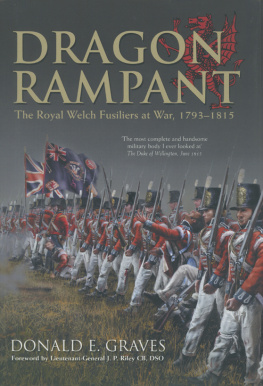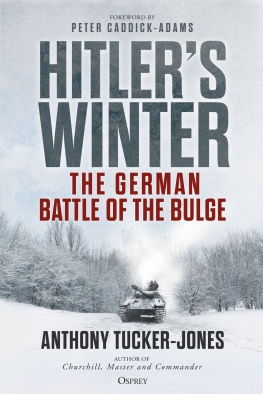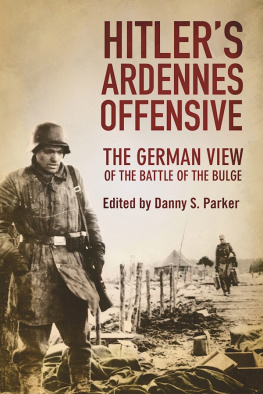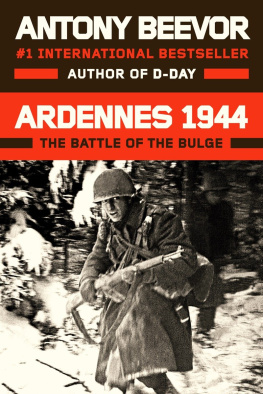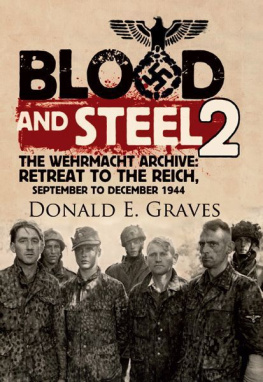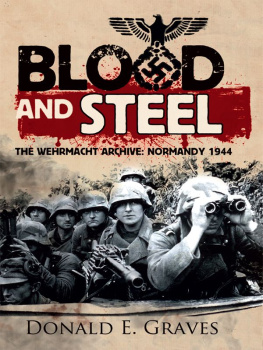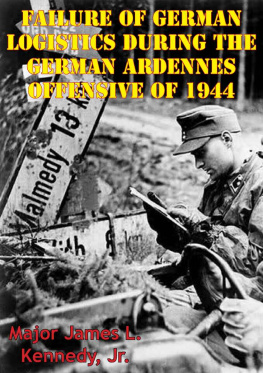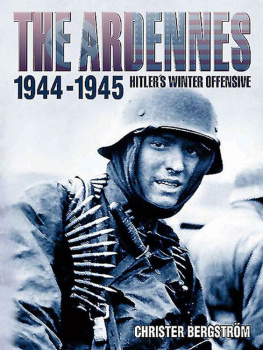Other Books by Donald E. Graves
Scarlet and Blue: The History of The Royal Regiment of Canada, 18612014 (The Regiment, 2015)
Blood and Steel 2: The Wehrmacht Archive: Retreat to the Reich, September to December 1944 (Frontline, 2015)
Blood and Steel: The Wehrmacht Archive: Normandy 1944 (Frontline, 2013)
And All Their Glory Past: Fort Erie, Plattsburgh and the Last Battles in the North (Robin Brass Studio, 2013)
First Campaign of an A.D.C.: The War of 1812 Memoir of Lt. William Jenkins Worth, U.S. Army (Old Fort Niagara Press, 2012)
Dragon Rampant: The Royal Welch Fusiliers at War, 17931815 (Frontline Books & Robin Brass Studio, 2010)
Fix Bayonets! A Royal Welch Fusilier at War, 17961815 (Robin Brass Studio & Spellmount Publishing, 2007)
Century of Service: The History of the South Alberta Light Horse (The South Alberta Light Horse Regiment Foundation & Robin Brass Studio, 2005)
More Fighting for Canada: Five Battles, 17601944 (Robin Brass Studio, 2004)
Another Place, Another Time: A U-boat Officers Wartime Album (with Werner Hirschmann; Robin Brass Studio, 2004, 2011)
In Peril on the Sea: The Royal Canadian Navy and the Battle of the Atlantic (Canadian Naval Memorial Trust & Robin Brass Studio, 2003)
Quebec, 1759: The Siege and the Battle (by C. P. Stacey; edited and with new material by Donald E. Graves; Robin Brass Studio, 2002)
Guns Across the River: The Battle of the Windmill, 1838 (Friends of Windmill Point & Robin Brass Studio, 2001, 2013)
Fighting for Canada: Seven Battles, 17581945 (Robin Brass Studio, 2000)
Field of Glory: The Battle of Cryslers Farm, 1813 (Robin Brass Studio, 1999)
The Incredible War of 1812: A Military History (by J. Mackay Hitsman; updated by Donald E. Graves; Robin Brass Studio, 1999)
South Albertas: A Canadian Regiment at War (South Alberta Regiment Veterans Association & Robin Brass Studio, 1998, 2004)
Where Right and Glory Lead! The Battle of Lundys Lane, 1814 (Robin Brass Studio, 1997, 2013)
Soldiers of 1814: American Enlisted Mens Memoirs of the Niagara Campaign (Old Fort Niagara Press, 1996)
Redcoats and Grey Jackets: The Battle of Chippawa, 1814 (Dundurn Press, 1994)
Merry Hearts Make Light Days: The War of 1812 Journal of Lieutenant John Le Couteur, 104th Foot (Carleton University Press, 1993; Robin Brass Studio, 2012)
Normandy 1944: The Canadian Summer
(with W. J. McAndrew and M. J. Whitby; Art Global, 1993)
 Blood and Steel 3: The Wehrmacht Archive:
Blood and Steel 3: The Wehrmacht Archive:
The Ardennes Offensive, December 1944 to January 1945This edition published in 2015 by Frontline Books,
an imprint of Pen & Sword Books Ltd,
47 Church Street, Barnsley, S. Yorkshire, S70 2AS
www.frontline-books.com
Copyright Donald E. Graves, 2015
The right of Donald E. Graves to be identified as the author of this work has been asserted by him in accordance with the Copyright, Designs and Patents Act 1988.
ISBN: 978-1-84832-236-3
PDF ISBN: 978-1-84832-239-4
EPUB ISBN: 978-1-84832-237-0
PRC ISBN: 978-1-84832-238-7
All rights reserved. No part of this publication may be reproduced, stored in or introduced into a retrieval system, or transmitted, in any form, or by any means (electronic, mechanical, photocopying, recording or otherwise) without the prior written permission of the publisher. Any person who does any unauthorized act in relation to this publication may be liable to criminal prosecution and civil claims for damages.
CIP data records for this title are available from the British Library.
For more information on our books, please visit or write to us at the above address.
Printed and bound by CPI Group (UK) Ltd, Croydon, CR0 4YY
Typeset in 10.8/13.5 point Minion Pro Regular
Introduction
Although some American intelligence officers suspected that the enemy was preparing a major operation, the German Ardennes offensive came as a complete surprise to the Allies. Shortly before dawn on 16 December 1944, some 1,600 artillery pieces, ranging in calibre from 75mm to 210mm, opened a heavy 90-minute bombardment on the forward positions of the First U.S. Army in the Ardennes and then the infantry moved forward. For the next six weeks, desperate fighting took place in some of the most inhospitable terrain in western Europe in sub-zero temperatures amid snow squalls and blizzards. When the battle ended in the last week of January 1945 with a total defeat for the Wehrmacht, about 160,000 men in both armies had been killed, wounded or captured. The third volume of the Blood and Steel, The Wehrmacht Archive series is concerned with this hard-fought military operation, popularly known as the Battle of the Bulge.
Like the preceding volumes in this series, Blood and Steel 3 is not a history of the campaign it documents indeed the story of the Ardennes offensive has been ably told elsewhere. Rather, it is a collection or anthology of translated German wartime documents taken from the daily Intelligence Summaries of First Canadian Army. It should be noted, however, that as most of the fighting on the Allied side was done by American troops, the greater part of the documents below come from United States sources.
which would be a massive assault directed against the American First Army in the Ardennes area. Toward that end, he brought back Feldmarschall Gerd von Rundstedt, a highly respected senior officer whom he had fired three months before, to serve as the nominal commander-in-chief on the Western Front. The operation was scheduled to take place about the middle of December and its purpose, as explained by Hitler to a group of selected officers, was to be:
(1) | the encirclement of 48 Allied divisions or a general Allied withdrawal; |
(2) | to gain time, viz. at least four weeks, for the consolidation of German war industry, particularly the synthetic oil industry; |
(3) | by accentuating political difficulties on the Continent and by propaganda, to detach one of the Allies from the war. |
Hitler, one historian has written, hoped with this operation to create conditions in which one Allied nation would blame the other for the debacle that engulfed its troops, to sow mutual mistrust, to deal such a blow that the citizens of America, Britain and Canada would demand that their leaders bring the boys home. A successful offensive that more or less destroyed First U.S. Army and captured the port of Antwerp would accomplish these objectives.
Hitlers senior commanders were not impressed with Wacht am Rhein. Von Rundstedt, the nominal commander-in-chief on the Western Front, was particularly disparaging. As he later remarked:
I strongly object to the fact that this stupid operation in the Ardennes is sometimes called the Rundstedt offensive, That is a complete misnomer. I had nothing to do with it. It came to me as an order complete to the last detail.


